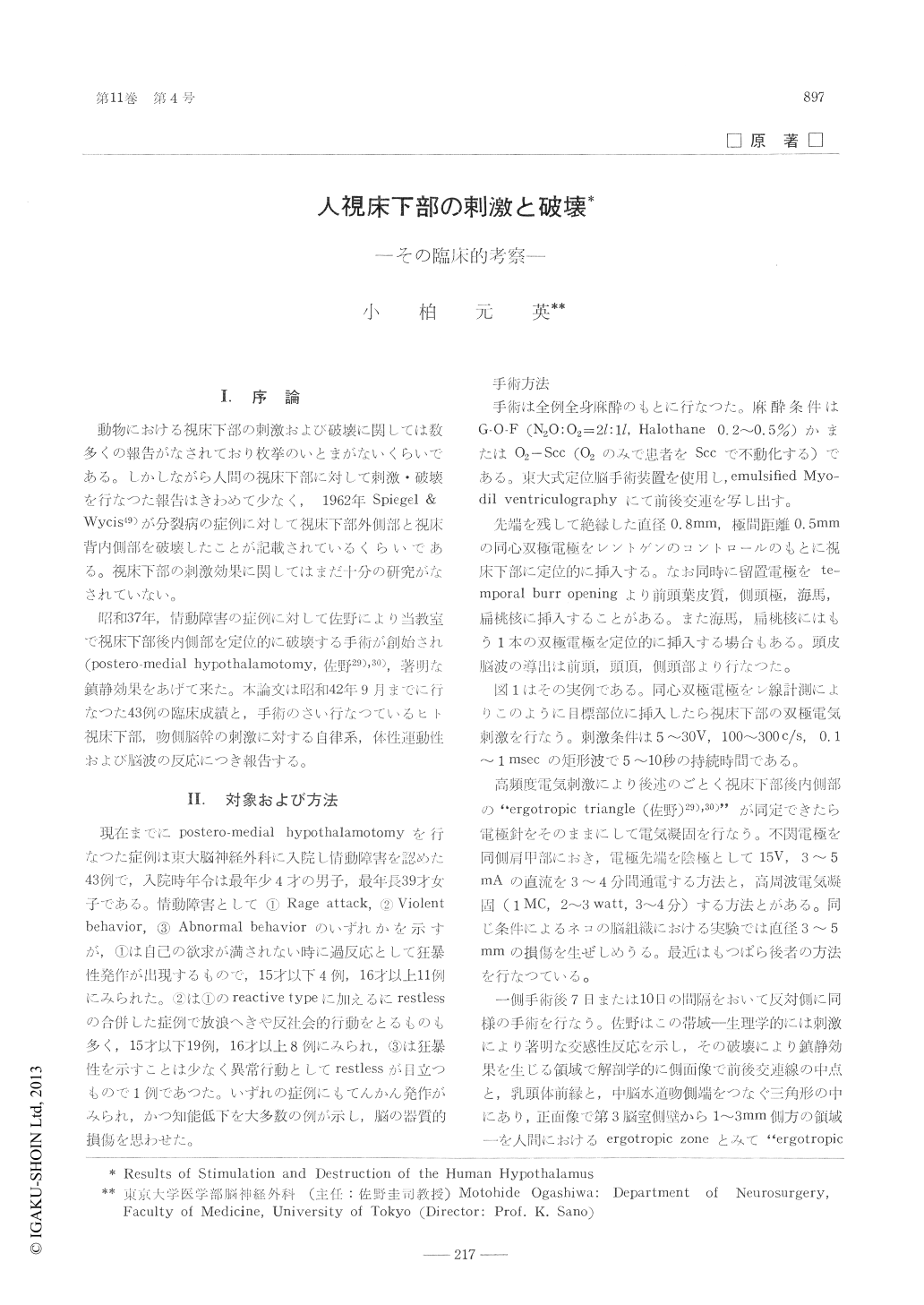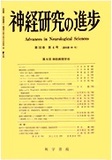Japanese
English
- 有料閲覧
- Abstract 文献概要
- 1ページ目 Look Inside
I.序論
動物における視床下部の刺激および破壊に関しては数多くの報告がなされており枚挙のいとまがないくらいである。しかしながら人間の視床下部に対して刺激・破壊を行なつた報告はきわめて少なく,1962年Spiegel & Wycis49)が分裂病の症例に対して視床下部外側部と視床背内側部を破壊したことが記載されているくらいである。視床下部の刺激効果に関してはまだ十分の研究がなされていない。
昭和37年,情動障害の症例に対して佐野により当教室で視床下部後内側部を定位的に破壊する手術が創始され(postero-medial hypothalamotomy,佐野29),30),著明な鎮静効果をあげて来た。本論文は昭和42年9月までに行なつた43例の臨床成績と,手術のさい行なつているヒト視床下部,吻側脳幹の刺激に対する自律系,体性運動性および脳波の反応につき報告する。
The postero-medial Hypothalamotomy (stereotaxic lesion of the postero-medial part of the hypothalamus) was performed in 43 cases with violent, aggressive behaviors (mostly with epileptic seizures).
On those occassions, various points of the hypothalamus and the rostral brain stem were stimulated and the responses, autonomic, somatomotor and electroencephalographic were observed and mapped on frontal sections of the diencephalo-mesencephalon. It was found in man that, in the posterior hypothalamus, the mediolateral composition of three zones, the most medial parasympathetic (trophotropic), the middle sympathetic (ergotropic) and the lateral parasympathetic was present, while in the anterior hypothalamus, this composition could not be established.
Polymorphous delta waves were produced by high cycle stimulation of the points in the postero-medial hypothalamus and the rostral brain stem. These delta waves were high voltage and iiregular in pattern, and lasted for one to 15 minutes after cessation of stimulation. This phenomenon may be a modified form of EEG activation as Prince and Shanzer stated.
Lesions by electrocoagulation were made in the area where rise in blood pressure, tachycardia and maximal pupillary dilatation occurred upon stimulation, and this area was designated as the "ergotropic triangle" by Sano.
Among 43 cases, three cases died 1 week, 1 year and 5 years later respectively.
Postoperative changes were as follows.
1) Emotional and personality changes.
Marked improvement of emotional disorders were obtained after the hypothalamotomy except one patient.
2) Effects on autonomic and endocrine activities.
Postoperatively there was a tendency to a decrease in sympathicotonia as revealed by Mecholyl test. There were two cases which showed temporary panhypopituitarism of a slight degree. There was a tendency to gain body weight after the operation.
3) Changes of EEG.
There were two groups in postoperative scalp EEG.One showed no marked changes and the other showed marked slowing of EEG. There was no apparent difference in sedative effects between these two groups.

Copyright © 1967, Igaku-Shoin Ltd. All rights reserved.


